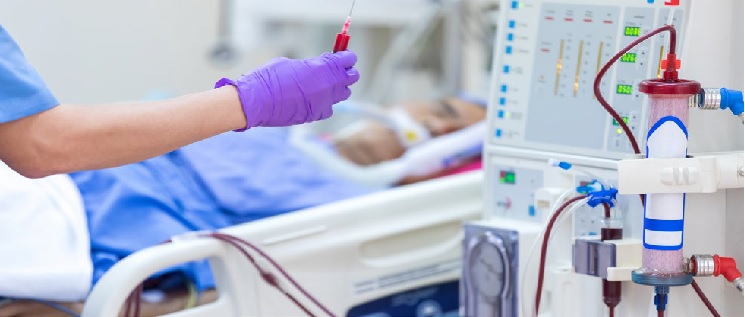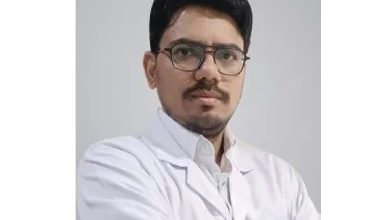Achieving Healthcare Equity in Dialysis Care

Vikram Vuppala, Founder & CEO, NephroPlus talks about what it takes to maintain equity in dialysis care
The state of End-Stage Renal Disease (ESRD) is alarming and according to estimates, about 1.4 lakh patients are on dialysis in India, currently. However, this is only 15 per cent of the 10 lakh patients who need kidney failure treatment either dialysis or transplant. Due to financial constraints, around 85 per cent of the patients currently cannot access the treatments available. The incidence of kidney failure is roughly 232 PMP (Patients per Million) as per studies conducted by Dr Vivek Jha and Dr Modi (Nonmedical Factors and Health-Related Quality of Life in CKD in India).
This roughly translates to an addition of more than three lakh new patients per year entering the system. On the other hand, kidney failure impacts both the affluent and the poor in similar ways contrary to the belief that it affects the rich more. Various studies have shown that diabetes impacts roughly the same way regardless of the socio-economic status. Also, there is no direct linkage to geography being a factor in kidney failure statistics. We are currently operational across 145 cities in 22 states.
Current State of Dialysis Care in India
Until 10 years ago, dialysis was only available in the top 10 cities. With the advent of new dialysis networks, accessibility vastly increased in the last decade and it may be noted that our dialysis centres are present across 75+ cities. Though the government has made an impact by going in for a few state-level PPPs (Public-Private Partnership projects), a lot more needs to be done to make the system more accessible. It is hard to fathom that dialysis is not available in more than 25 per cent of district headquarters in the country.
Further, private sector dialysis centres still account for a vast majority of dialysis capacity ~75 per cent of the capacity) in India. Though during the last five years, we have seen PPPs happening in this space, unfortunately, many public hospitals end up buying expensive dialysis machines through tenders, only to realise later that the machines require efficient manpower and operational facilities, leading many of these machines to lie idle in the storerooms.Geography-wise, the northeastern part of the country has a very low capacity even now. We are working hard to improve the scenario where we opened the first centre in Guwahati a few months back and hope to launch more centres to improve access in the North East.
Breaking the Socioeconomic Barriers
We have the same clinical backbone regardless of the type of project we execute. For example, apart from running dialysis centres of Max, Medanta, Fortis and Ruby Hospitals, are also in PPPs with a few state governments. With the clinical backbone remaining the same, value-added services and infrastructure vary depending on the type of facility. Each cluster of NephroPlus has a dedicated quality manager whose job is to audit the facilities each month and ensure that the quality is not compromised Whether the centres are in Guwahati or Alappuzha or Srinagar, efficient quality managers ensure that the overall system runs efficiently.
Achieving Healthcare Equity
We strive very hard to improve healthcare equity. We are working with hospitals across the country regardless of the location to partner with us to ensure standardisation of care and clinical outcomes. We are also working with the government authorities to ensure that dialysis providers are accountable for clinical outcomes. This is a sensitive healthcare procedure wherein if outcomes are not measured and clinical excellence is not strived for, many patients can get cross infected with Hepatitis C, Hepatitis B and HIV infections. We measure various clinical data points and one key measure of how we benefit the patients is by our decreased mortality rate as compared to other markets in India. The average life expectancy of our patients is close to two years while this number is ~1.25 years in the overall market.
Another measure of benefit to patients is the massive reduction of cross-infection rates in our network. We have a close to zero cross-infection rate due to our standardised stringent protocols. On the contrary, roughly 25 per cent of the patients overall in India get cross infected post-dialysis in a year.
Key factors to achieve nationwide health equity
The three key factors, according to me, to achieve nationwide health equity are
• Publishing of clinical outcomes by all service providers
NephroPlus publishes clinical outcomes every year in national and international nephrology conferences. We have published manuscripts in international journals. The government should mandate all providers to publish these outcomes so that patients will receive appropriate standards of care in India and gain healthcare equity.
• The government ensures clinical quality as key criteria in PPP projects
The government currently focuses on L1 (lowest cost) in PPP tenders and does not make providers accountable for inferior clinical outcomes. It is high time that the government authorities bring objective clinical outcomes as a measure of quality and penalise inferior providers in PPP projects as scores of people are vulnerable to get cross infected or dying due to lack of attention to clinical protocols among service providers.
• Improvement of dialysis pricing
We all know that quality comes at a cost. The government should make dialysis pricing sustainable in India. The Central Government Health Scheme has not increased dialysis pricing for the last six years. For example, the Telangana Aarogyasri scheme has not increased the price for dialysis for the last 11 years.
The Future
The Government of India and various state governments have to play a key role to positively change the access of dialysis across the country and also ensure basic quality is provided to patients. Maybe, sometime in the future, every patient with kidney failure anywhere in India can get access to basic quality dialysis. We are all hopeful.




